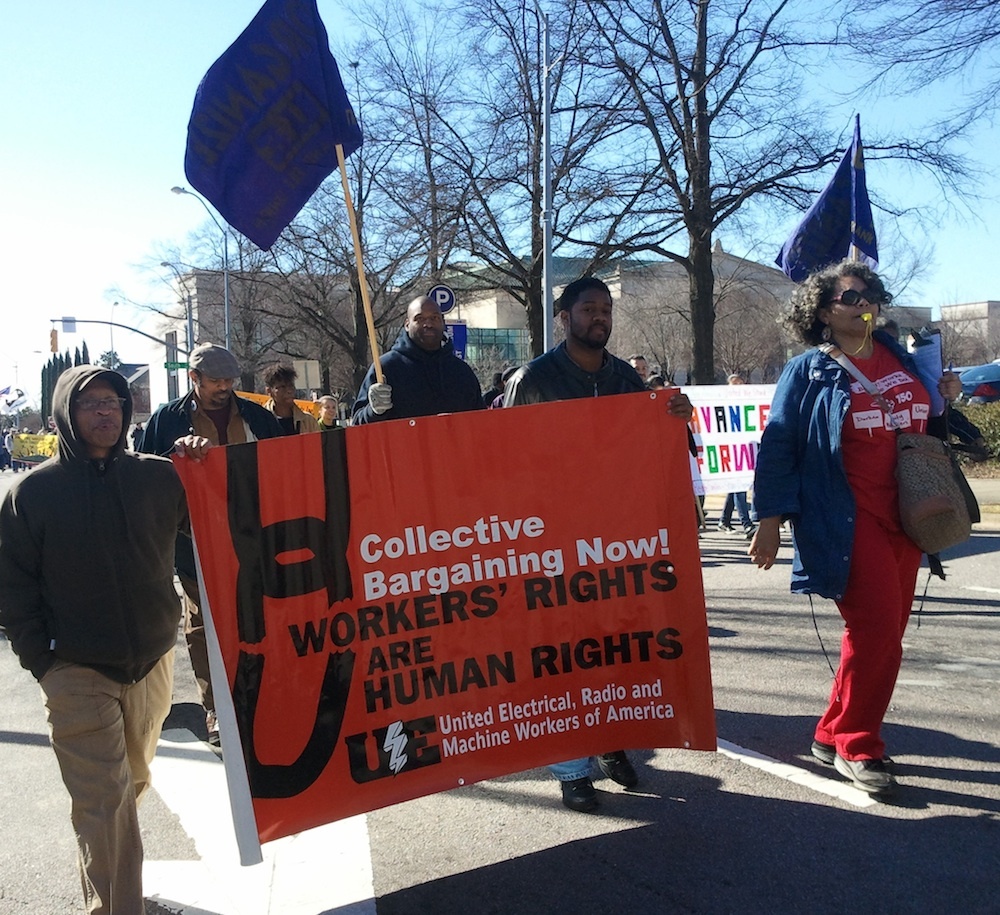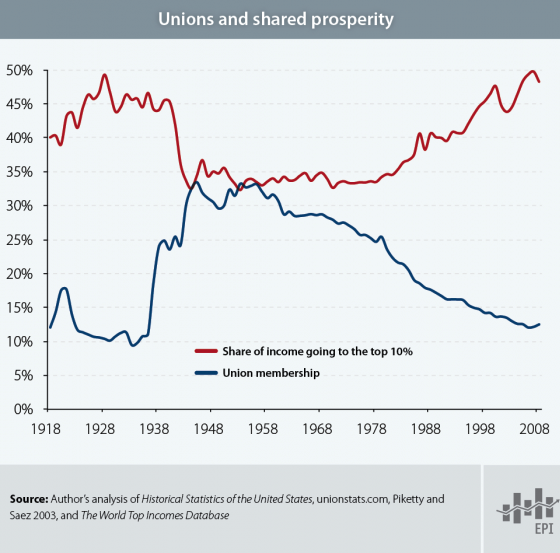INSTITUTE INDEX: Unions as a remedy for growing income inequality

Average CEO compensation in 2013, according to a study released this month: $15.2 million
Percent by which CEO compensation, inflation-adjusted, increased from 1978 to 2013: 937
Percent by which the typical worker's compensation grew over the same period: 10.2
CEO-to-worker compensation ratio in 1965: 20-to-1
In 2013: 295.9-to-1
Rank of the South among U.S. regions with the greatest inequality within its communities: 1

Of the 100 U.S. counties with the greatest income inequality, number in the South: 77
Rank of the South among the nation's least-unionized regions: 1
Percent of all U.S. wage and salary workers who belonged to a union in 1983: 20
In 2012: 11
Percent of the increase in inequality over the past 30 years estimated to be attributable to the decline in unionization: 10 to 20
Percent more union members earn on average than non-union workers in comparable jobs: about 15
Number of states in the old Confederacy with unionization rates above the national average: 0
Year in which the AFL-CIO approved a resolution to develop a Southern organizing strategy: 2013
Of the five states where union membership is growing the fastest, percent in the South: 100
Percent by which union membership grew last year in Tennessee: 25
In Georgia and Alabama: 22.2
In South Carolina: 19
In Virginia: 13.2
Rank of North Carolina among the states with the lowest unionization rates: 1
Percent of North Carolinians who belong to unions: 3
Number of people arrested at this week's Moral Monday protest at the North Carolina legislature focusing on workers' rights, including two national labor leaders: 20
(Click on figure to go to source. Chart from the Economic Policy Institute's website.)
Tags
Sue Sturgis
Sue is the former editorial director of Facing South and the Institute for Southern Studies.
